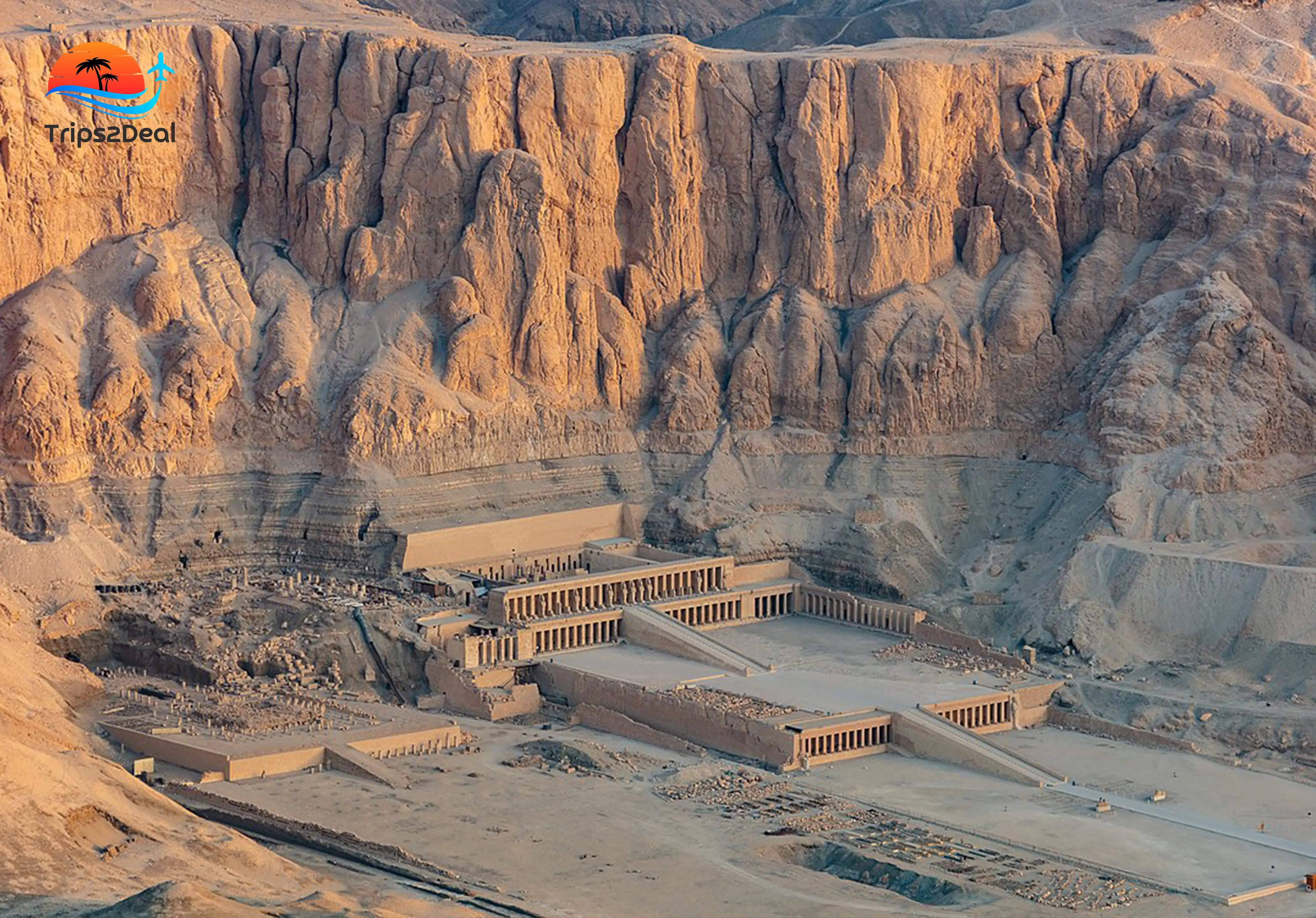Blogs

Temple of Hatshepsut
Hatshepsut's Temple, also known as Djeser-Djeseru or "Holy of Holies" is one of the most impressive buildings from ancient Egypt. At the foot of the cliffs, Mortuary Temple of Hatshepsut situated near Luxor is a remarkable temple dedicated to Queen Hatshepsut who one of the few female Pharaohs in ancient Egyptian history. Constructed in the 15th century BCE, it was dedicated to the sun god Amun-Ra and immortalized one of Egypt´s most incredible rulers.
Architectural Brilliance
A marvel of architectural composition and environmental integration, the temple flows with the rocky topography surrounding the raw cliffs of Thebes. Its three-levels of stepped terraces linked by monumental ramps an architectural form which made the building different that contemporary Egyptian temples. Senenmut, Hatshepsut's right-hand man and chief architect of the temple, had extensive knowledge of symmetry, proportion and spatial design; his genius is evident in the layout.

The stunning limestone columns lining every terrace give the stately front a regal flair reminiscent of Hatshepsut's splendor. Reliefs covering the walls of the temple detail her divine birth, coronation, and great accomplishments — including the well-known expedition to the Land of Punt, a successful trading venture that netted myrrh, incense and exotic animals for Egypt.
Religious and Political Significance
Djeser-Djeseru functioned as a mortuary temple where rituals such as those performed for Hatshepsut's afterlife and to the gods were celebrated. The other was simply a proclamation she could wear in a man-centered ruling world as the rightful pharaoh of Egypt. Hatshepsut made her reign both god-given and powerful by associating herself with Amun-Ra.
Not only was the location of the temple significant in respect to its orientation corresponding with the Temple of Karnak located just across the Nile, but there are also memories attached to it telling us that this site is a physical representation of spiritual and mental alignment. The Temple was always intended to be more than a mere building; it was meant to embody the gateway between heaven and earth.
Modern Legacy
The Temple of Hatshepsut is now an important tourist site alongside some historians and archaeologists. Today, restoration and preservation efforts are made for the Old North Church as a historical landmark of cultural significance. The glory of antiquity is retained by the temple via its innovative construction, elaborate carvings, and symbolic meaning which preserves most of the significance attached to Hatshepsut the queen.





